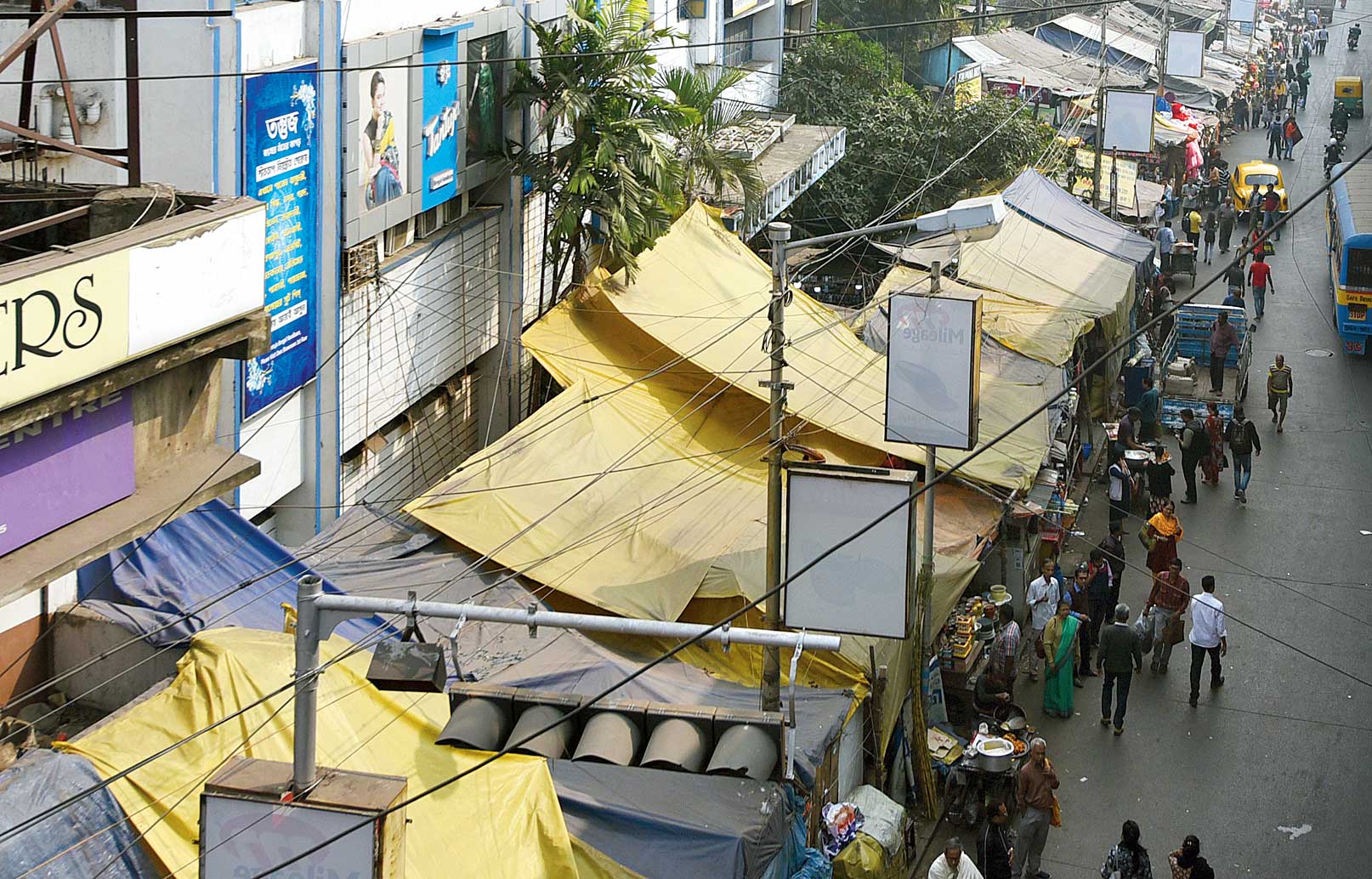The hawker sprawl in Gariahat and the threats lurking within mirror the unbridled expansion of illegal footpath businesses across the city, posing a risk to every building in the vicinity and causing a hindrance to firefighting whenever disaster strikes.
Stalls with tarpaulin or plastic roofs, low-hanging wires that are used to steal electricity and boxes containing inflammable materials are commonplace in Gariahat, Hatibagan, Burrabazar and all other hawker zones.
Buildings facing these hawker stalls are exposed to the threat of a fire every minute. At night, when the stalls are shut, the possibility of a spark going undetected until it is too late doubles.
Mayor and minister Firhad Hakim admitted on Monday that several places have become potential tinderboxes because of the way hawkers conduct their businesses. “Gariahat, Shyambazar and some other places are most vulnerable. We will take care of the hawkers but they have to follow a few rules. They cannot use plastic sheets, they will not be allowed to light a fire in the open for cooking or any other purpose and they have to remove their wares after the day’s business is done,” he said at the civic headquarters.
The mayor has called representatives of the hawkers’ unions to a meeting on Tuesday where he will lay down the ground rules, officials said.
Tarpaulin is a popular choice of roof for hawkers because it is waterproof and durable. But the material is highly inflammable.
The preliminary investigation into the fire at Gurudas Mansion at the Gariahat junction early on Sunday has homed in on the hypothesis that the sparks started in a hawker’s stall in front of the five-storey structure. That the building itself was allegedly not equipped with even basic firefighting equipment made it a sitting duck.
A forensic sleuth said it appeared that the fire started from the “loose end” of an electrical wire hanging over that stall.
The Bagree Market blaze last September had also started in the hawkers’ row on the footpath in front of that building.
According to an engineer, most electrical fires start as sparks. When those sparks get a medium like tarpaulin sheets or garments, the flames leap from one section to another and soon engulf a large area.
Hakim’s statement that hawkers need to adhere to some basic rules in return for being allowed to do business on the footpaths isn’t a first. The West Bengal Urban Street Vendors (Protection of Livelihood and Regulation of Street Vending) Rules, 2018, includes all the measures that Hakim spoke of.
These rules were passed by the Assembly and published in June last year. But in the six months since that gazette notification, the Calcutta Municipal Corporation (CMC) has done little to implement the plan.
One of the key stipulations in the rules is that two-thirds of a footpath must be left free for pedestrians.










